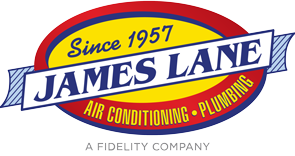Molds are living organisms, called fungi, that are present throughout the environment. They reproduce by releasing spores into the air. These spores remain dormant until they find the environmental conditions that allow them to grow into a new mold colony. Outdoors, molds serve a useful purpose, breaking down organic waste products. Indoors, they are destructive, damaging property and sometimes endangering health. While it isn’t possible to eliminate mold spores from your home entirely, you can prevent them from creating mold issues in your home during the North Texas winter season.
How Mold Finds its Way Into Your Home
Mold spores are everywhere in our environment. These microscopic organisms find their way into our homes in a variety of ways, including traveling in with the fresh, outdoor air when we open windows or doors, riding in on our clothes or shoes, and traveling in on the coats of household pets. After they enter the home, mold spores will settle, like dust, and can be found on most every surface. While you can reduce the accumulation of mold spores in the home with air purifiers and frequent cleaning, keeping the indoor environment free of them entirely is impossible.
How Mold Spores Become Mold Issues
If provided with the right conditions, mold spores will begin to grow, and many varieties grow quite quickly, appearing as visible mold within 48 hours. Factors that prompt dormant mold spores to become active mold colonies include appropriate temperatures, nutrient sources and a moist environment. Since molds thrive in the same temperature ranges that humans find comfortable and the average home contains plenty of organic materials, such as wood, paper and fabrics woven of natural fibers among many others, two of these three factors are always present. Moisture is the key factor that differs from one home to another, and homes with poorly-controlled indoor humidity, leaks or other moisture problems much more likely to develop mold issues.
Why Winter Can be Prime Time For Mold Issues in North Texas
As the weather grows cooler and the heating season begins, the difference between outdoor and indoor temperatures can create condensation issues in areas such as attics, crawl spaces and exterior walls. That moisture can soak into insulation, wood and wallboard, prompting mold growth. Additionally, homes are closed up tightly when it is cold, a factor that can contribute to the development of warm, moist pockets of air generated by household activities, like bathing, clothes washing, cooking and dish washing. Moisture from that damp air will condense on surfaces inside the home, creating the potential for mold growth as wood floors, carpets, wall treatments, and furnishings are dampened.
Mold Issues Can Damage Home and Health
Since mold slowly consumes the materials it grows on, it can cause damage. For example, left to grow unhindered inside walls, it can weaken wood beams, wallboard and other building materials, causing structural damage. Mold causes unsightly stains on flooring and furnishings, and creates an unpleasant, musty smell. Mold releases spores into the air, which can irritate the eyes, nasal passages and lungs of residents. People with allergies may react to mold spores, leading to reactions that can range from mild annoyances to serious medical problems. In people with asthma, mold spores can trigger attacks, and in individuals with compromised immune system function, may induce illness.
Detecting Existing Mold Issues and Preventing New Ones
Visible mold in the home typically presents a black, white of greenish spots on walls, ceilings or other surfaces. However, mold often grows in unseen areas, such as behind wallpaper or inside walls. In rooms where unseen mold issues exist, a musty odor is usually present and should prompt further investigation. Small, visible outbreaks of mold should be cleaned up immediately to avoid spread. Extensive mold issues inside walls or in attics or crawl spaces may require the services of a mold remediation contractor to resolve.
Mold issues can be prevented by monitoring home humidity levels and taking measures to keep those levels between 30 and 50 percent. Effective humidity control measures include proper ventilation in attics, basements or crawl spaces to prevent condensation. Efficient ventilation in kitchens, bathrooms and laundry rooms is essential as well, and moist air from those areas should be vented to the outdoors, rather than attics or crawl spaces.
If you need help addressing moisture or ventilation problems that could cause mold issues, please contact James Lane Air Conditioning & Plumbing Co. We’ve been helping homeowners in Wichita Falls, Vernon, Burkburnett, Graham, Iowa Park, and Olney keep their homes comfortable and healthy since 1957.
